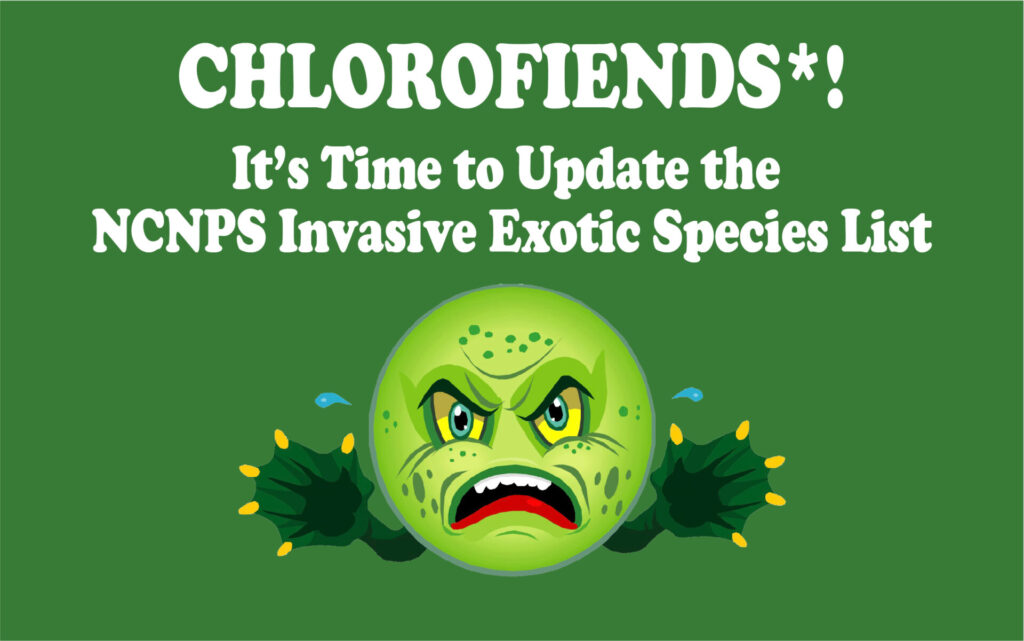By Lisa Lofland Gould
Photos courtesy Lisa Lofland Gould
Nothing gold can stay, penned poet Robert Frost. And that’s certainly true for the North Carolina Native Plant Society’s Invasive Exotic Species List: it’s time for a reburnishing. The NCNPS Invasive Exotic Species List is now over a decade old—not only have there been many changes to scientific names since the list was originally developed, but there have been many changes to the state’s flora. No flora is ever static: plants move into the state by accident or design, and other plants are snuffed out by development, invasive species, and climate change (among other forces).
Some Plants Have Become More Invasive
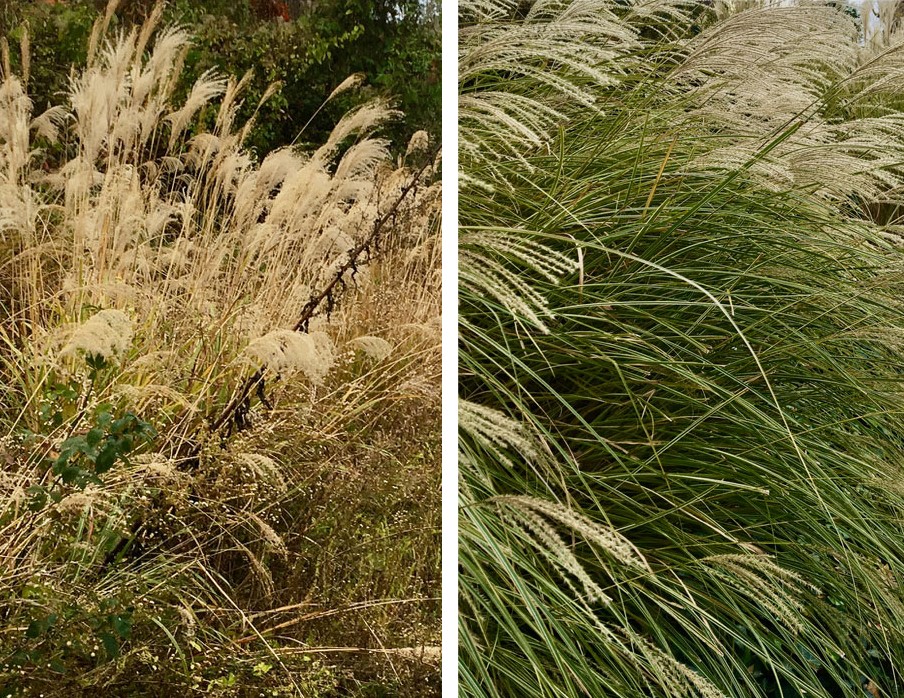
In addition, the status of plants that are already on the list may have changed over the past decade. Chinese Silver Grass (Miscanthus sinensis), for example, is all too frequently seen along North Carolina’s mountain and piedmont roadsides, completely crowding out native goldenrods and asters. Alan Weakley (2022) notes that this plant is “increasingly moving into a wide variety of natural habitats, including those with prescribed fire.” As we revise our list, should we move Chinese Silver Grass from Rank 2 [Significant Threat] to Rank 1 [Severe Threat]?
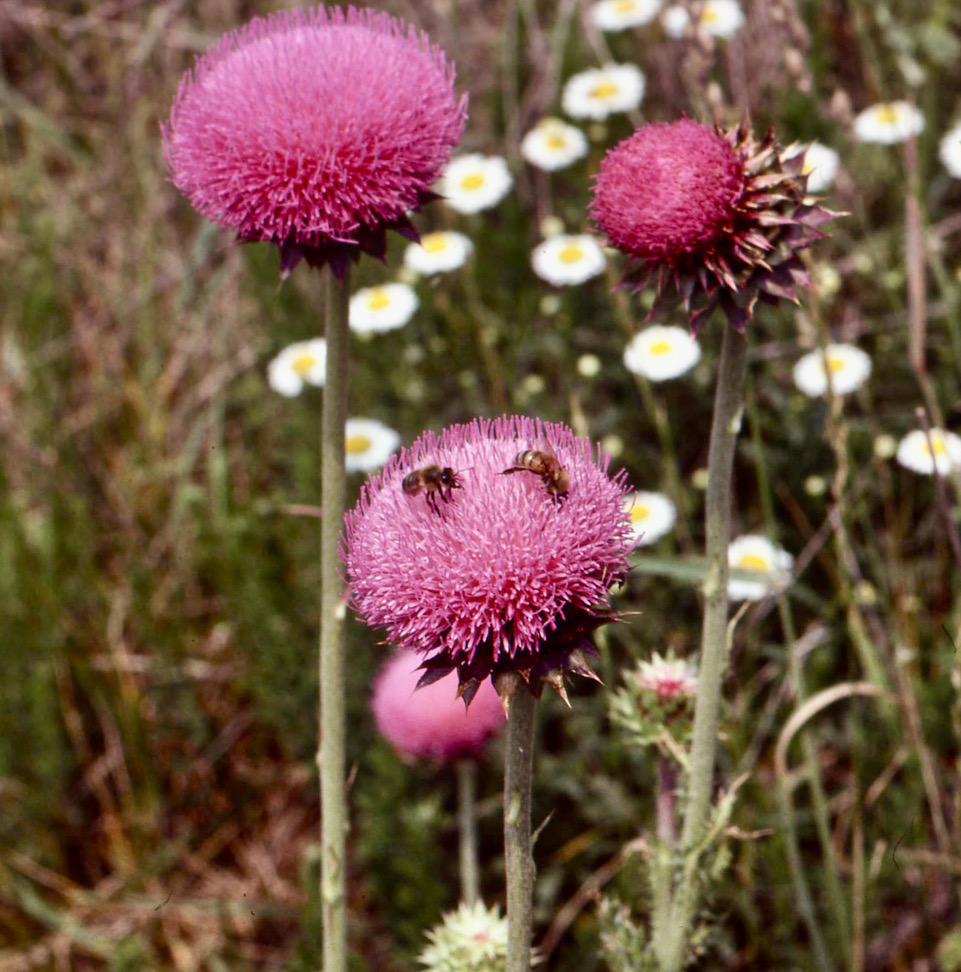
Or how about Musk Thistle (Carduus nutans), a Eurasian biennial/perennial that has increased in North Carolina in the past twenty-plus years, is reported from at least 25 NC counties, and appears on the invasive lists of GA, SC, NCDOT, and the US Forest Service? Should this be moved from Watch List B to Watch List A, or even to Rank 3 [Lesser Threat]?
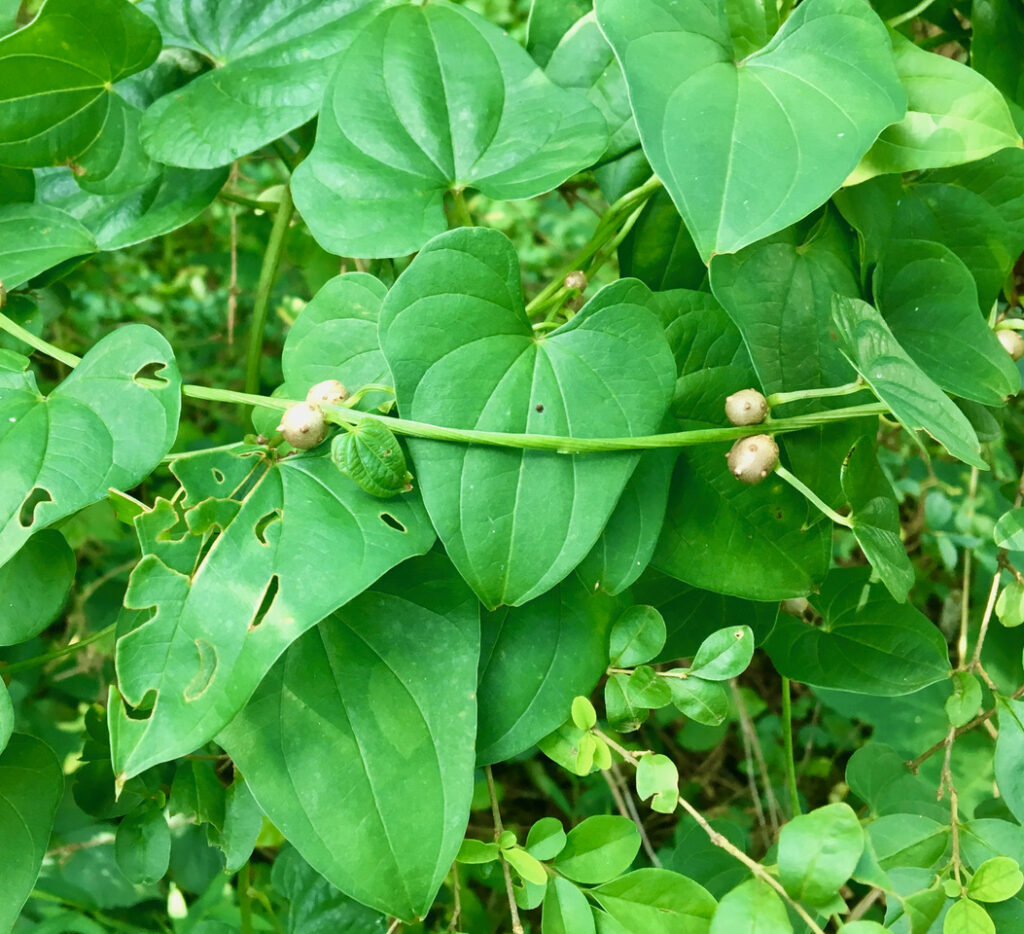
Chinese Yam/Cinnamon Vine (Dioscorea polystachya) seems to be spreading rampantly in the NC piedmont, is recorded in 48 NC counties and listed on the invasive lists of our neighboring states, NCDOT, and the USFS. Move from Rank 2 to Rank 1?
On the other hand, Hare’s-ear/Thoroughwax (Bupleurum rotundifolium), a Eurasian annual, is on Watch List A but has only been reported from two NC counties, and none since 1965; it does not appear on any of our adjacent states’ invasive lists. Should this be removed from the NCNPS list?
Know Your Lists
The current invasive species list has five categories: Rank 1 is Severe Threat; these are plants “that have invasive characteristics and spread readily into native plant communities, displacing native vegetation”. Rank 2 [Significant Threat] contains “exotic plant species that display some invasive characteristics, but do not appear to present as great a threat to native communities in NC as the species listed in Rank 1.” Rank 3 [Lesser Threat] plants “spread into or around disturbed areas and are presently considered a low threat to native plant communities in NC.”
There are two Watch List categories: Watch List A includes “exotic plants that naturalize and may become a problem in the future; includes species that are or could become widespread in North Carolina”. Watch List B are “exotic plant species that cause problems in adjacent states but have not yet been reported to cause problems in NC.”
The original NCNPS list was very thoughtfully compiled by Misty Franklin Buchanan with review and input from biologists at the NC Natural Heritage Program, NC Botanical Garden, University of North Carolina Herbarium, NC Exotic Pest Plant Council [now the NC Invasive Plant Council], NC DENR [North Carolina Department of Environmental Quality] Aquatic Weed Control Program, US Fish & Wildlife Service, The Nature Conservancy, and the NC Zoo.
As we work to revise the list, we are also seeking additional sources of knowledge and information. The NC Department of Transportation [NCDOT] has an invasive plant list, as does the US Forest Service. Our neighboring states of Georgia, South Carolina, Tennessee, and Virginia maintain lists that help inform us of what problem plants might be coming our way.
We Need Your Help
One very helpful tool in revising the list is the Vascular Plants of North Carolina website, which recently added non-native plants to its repertoire. The work of Harry LeGrand, Bruce Sorrie, and Tom Howard, this searchable site shows the presence of each species by county in North Carolina. But it, too, is a work in progress: there are lots of plants that are almost assuredly present but have not been verified in specific counties, which points to the importance of each of us (yes, ALL of us plant lovers out there) keeping Alan Weakley at the UNC Herbarium and the authors of the Vascular Plants website informed (via herbarium specimens or photographs) of what we are observing in our neck of the woods.
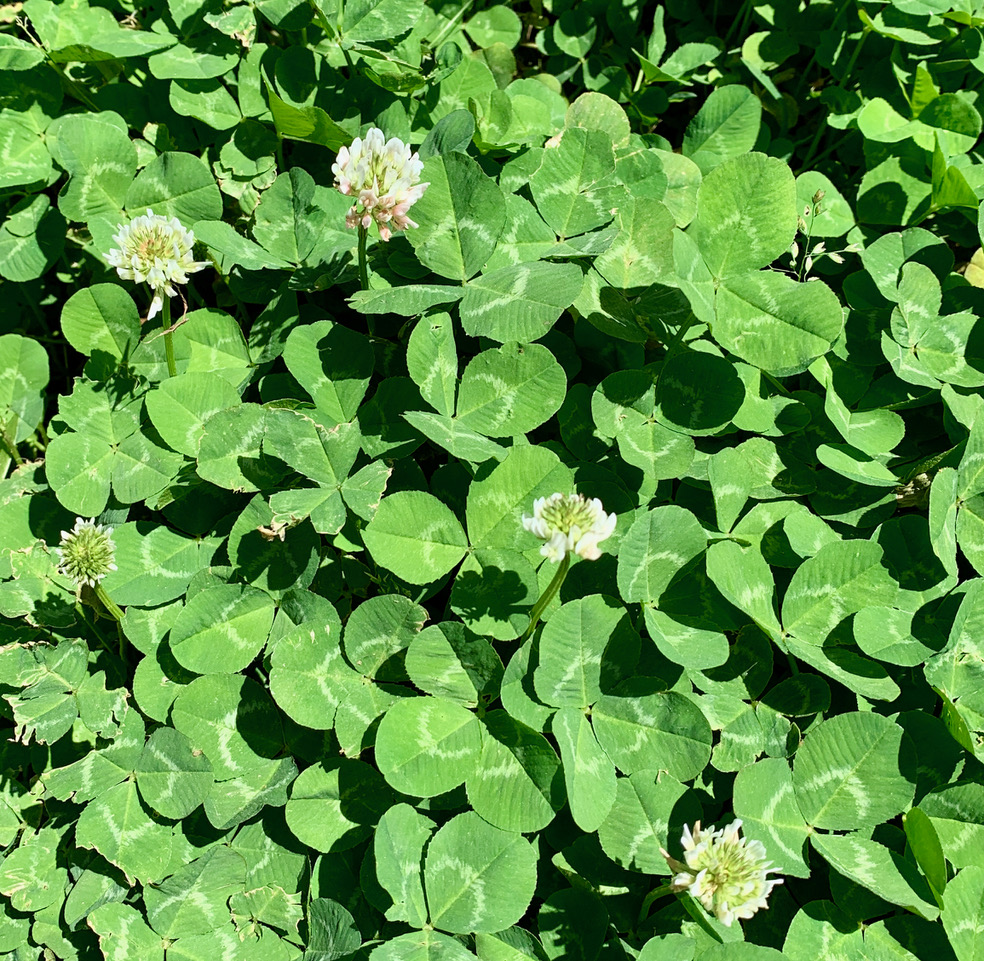
Is a non-native plant automatically labeled invasive if it can be found in all North Carolina counties? White Clover (Trifolium repens), for example, is probably in every NC county but is not considered invasive: it’s a denizen of lawns and disturbed areas and does not appear to penetrate and alter undisturbed natural areas. Abundant presence in many North Carolina counties does not necessarily mean a non-native plant is invasive.
NCNPS Exotic Invasive List
But why bother creating such a list—of what use is it? The NC Native Plant Society has created a set of objectives for our Exotic Invasive List:
1) To educate NCNPS members and the public about the ecological damage done by invasive species and to increase awareness of existing invasive plants in North Carolina.
2) To alert NCNPS members and the public about plants that are becoming invasive in North Carolina and adjacent states, giving people a warning and helping them make informed decisions about plant purchases and land management.
3) To help the NC nursery and landscape industry better understand plants that are invasive in North Carolina, and to provide NCNPS with a screening device for the nurseries listing on the NCNPS website.
What Native Plants Can We Use?
Providing information to the nursery and landscape industry is crucial, not only to give guidance on what is already or becoming invasive, but also to suggest the many wonderful native plants that can be used in residential and commercial landscapes.
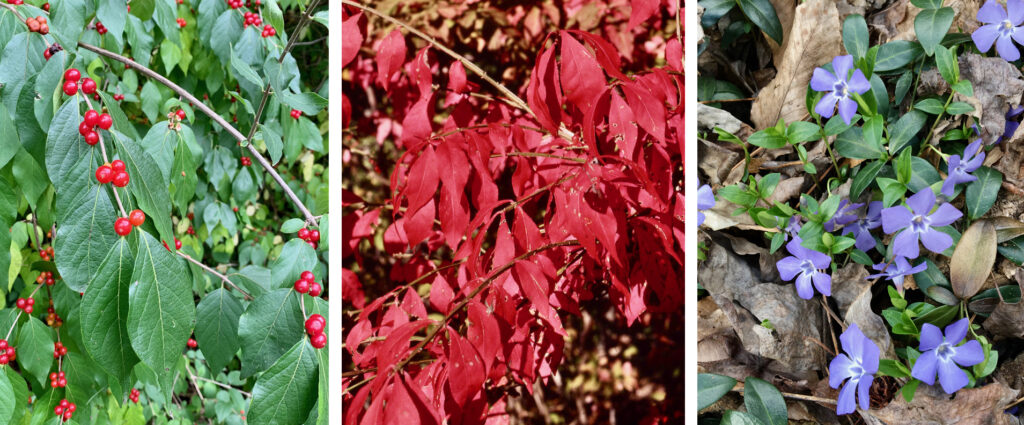
NCNPS carefully screens the nurseries we list on our website and will not list any nursery that sells Rank 1 [Severe Threat] plants. Should we also exclude nurseries that sell Rank 2 [Significant Threat] plants, which includes well-known invasives such as Japanese Barberry (Berberis thunbergii), Amur Honeysuckle (Lonicera maackii), Porcelain-berry (Ampelopsis glandulosa), Nandina (Nandina domestica), Burning Bush (Euonymus alatus), and Common Periwinkle (Vinca minor)?
Assembling a list of truly invasive species requires lots of thought and exchange of knowledge among many people, agencies, and organizations in the state. A new list is not on the immediate horizon, but we hope to have one in place within the next year. In the meantime, keep submitting your observations, and as always, GO NATIVE!
By Lisa Lofland Gould
Photos courtesy Lisa Lofland Gould
Native Plant News – Winter 2022

Lisa Gould is a plant ecologist and co-founder of the Rhode Island Wild Plant Society; she currently serves on the NCNPS board of directors and chairs the management committee for the Emily Allen Wildflower Preserve in Winston-Salem.
Chlorofiends! is a regular column in Native Plant News. If you have information or comments on invasive species in North Carolina, please share them with Lisa Gould (lisalgould@gmail.com).
*Thanks to Jim Butcher’s The Dresden Files for the column title.
